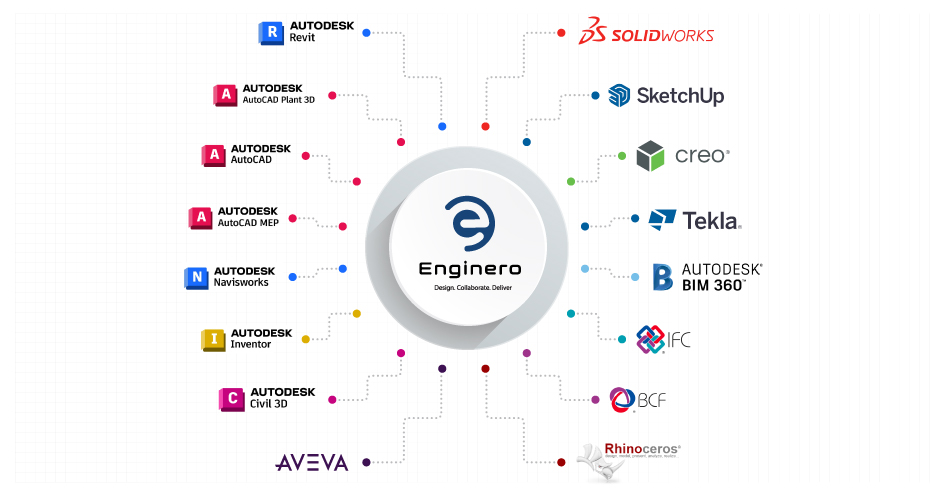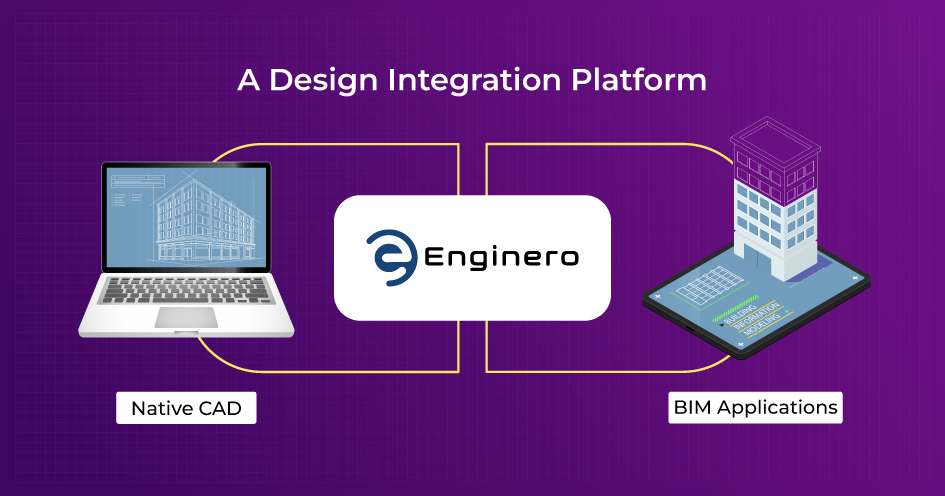The construction and engineering sectors are growing significantly, along with an exponential rise in complexities, which could be due to customer needs, technology adoption, or regulatory changes. Engineers and architects usually depend on various digital tools to design the product, such as computer-aided design (CAD) or building information modeling (BIM). Each software has its capabilities and cannot be compromised. However, while integrating them to get the outcome, project users often face issues.
To overcome these challenges, the industry demands a platform that stores, manages, and integrates seamlessly with its native design applications. Enginero is specifically designed for this purpose. This platform seamlessly connects with authoring tools, centrally manages design data, and fosters real-time collaboration across various disciplines. This informative article will provide you with a detailed overview of Enginero and how it streamlines design projects with its intuitive features.
Why are Different CAD and BIM Models Needed in Design and Construction?

Designing and building a structure or infrastructure project is a collaborative effort to bring together a variety of stakeholders, like architects, engineers, contractors, fabricators, and facility managers, each with their own set of needs and priorities. CAD models play a crucial role in creating detailed, fabrication-ready drawings that ensure engineering accuracy and streamline manufacturing.
Meanwhile, BIM models are enriched with information on aspects like material specifications, cost, scheduling, and spatial relationships to coordinate, plan, and manage the lifecycle of the project. Since it is not possible to develop the entire complex process of designing a project in one go, it is normal that several CAD and BIM models are developed simultaneously, each intended for a special purpose.
When combined, these models create a detailed digital representation of the project, fostering collaboration, minimizing errors, and improving decision-making from the initial concept to completion.
Limitations of Traditional Interoperability and Coordination
Even with all the advancements, a lot of industries are still stuck using outdated methods to manage data and processes across different systems. These old-school approaches often lead to slowing down the processes, leading to bottlenecks and inefficiencies in decision-making.
Fragmented Tools and Workflows
One of the biggest challenges is the use of different tools in the projects. Different teams rely on various tools for communication, project management, and managing their designs, tailored as per their needs, which may not be compatible with other teams. When dealing with many teams, it is mandatory to follow standard workflows and a common design management tool to ensure everyone is on the same page.
Inefficient Data Exchange
Manual file transfer or sharing introduces limitations to the projects. Using traditional file transfer methods delays the processes and is error prone. While working on a coordinated project, it is mandatory to maintain all the files in a common space where every user can easily access and helps in issue resolution as well. Without direct integration with native design software, designers face issues with version control, and the absence of real-time syncing can lead to collaborators working with outdated or inconsistent data sets.
Design Loss and Human Error
Delays in data transfer, often referred to as data latency, along with the lack of real-time updates, can lead to outdated information. Common issues like file corruption, accidental overwrites, and missed updates frequently arise in manual workflows that are not automated. These problems are not just a hassle; they can lead to serious financial issues, particularly in critical sectors such as healthcare, finance, or supply chain management, where accuracy and timing are everything.
Enginero’s Role as a Unified Design Integration Platform

As organizations demand agility, collaboration, and real-time visibility among their teams, Enginero stands out as an innovative platform designed to bring together design data and workflows seamlessly.
Overview of Enginero
Enginero is a design management platform purpose-built to solve the challenges of coordination across engineering, product, and design teams. Enginero seamlessly integrates into existing ecosystems. Whether you are juggling CAD models, design specifications, or engineering documents, Enginero makes sure everything is easy to access, perfectly synchronized, and managed in real time.
A Central Source of Truth for Design Data
The standout feature of Enginero is its ability to centralize the project-related documents and designs in a unified platform. It also helps to maintain versions of all the designs and documents, maintaining visibility and ensuring accountability of every project asset.
By having a track of all the versions and designs, project heads can review them easily and make informed decisions effectively.
Native Integration with Design Tools
Without any third-party connectors, Enginero directly integrates with the leading CAD and BIM tools, providing a seamless integration and flow of information directly from the design software to the common environment, along with supportive documents. With native integration, users can directly publish their updated models to the cloud space, which maintains the flow seamlessly and helps project heads to access and assign them to the respective user.
Why Enginero Stands Out: A Closer Look at Its Core Features
Unified Model Management
Enginero acts as a hub for all project designs, whether they are 3D models or 2D drawings, and streamlines the management. When it comes to the construction sector, it brings all teams such as architects, structural, mechanical, and more.
Real-Time Model Federation and Aggregation
Enginero helps its users to unify the project designs into a federated model for easy review, coordination, and validation. This helps project managers identify if the model fits well with the site’s environment or any other persistent issues on hand.
Bidirectional Synchronization
Changes made to the models are directly synchronized from the native application, eliminating the conflict of issues with versions. With this, every team member works on the latest version, avoiding confusion. Also, those models are viewed directly in the Enginero’s model viewer and can also be compared to the versions. All changes are tracked with automatic versioning, rollback options, and audit trails to ensure compliance and design governance.
Role-based Access and Visibility
Enginero helps project managers provide controlled access to their project members. Project heads can decide and set permissions to each user, from viewing the model, modifying it, to reviewing and approving. This maintains integrity in the project and maintains data security.
Integrated Model Viewer
Enginero users can access their models for reviews and validation through an interactive 3D viewer within Enginero, without opening the native CAD/BIM application. Its advanced features help you find issues within the model, review, and raise issues from there.
Issue and RFI Management
While working in a collaborative way, it is common to have issues and conflicts. To solve them and ensure that the conflict is solved, Enginero provides a feature to raise issues either from the Enginero viewer or from the native CAD/BIM application. This saves time and reduces errors while producing it in real time. Also, where there is a lack of information or in need of any reference files/standards, users can raise those requests as an RFI seamlessly.
Conclusion
Wrapping up, Enginero is one of the robust platforms that fosters collaboration among project teams through its integration with native CAD and BIM applications. Centralization of design data with real-time synchronization, coupled with tools for model federation, role-based access, issue management, and more, are the few out-standing features allowing Enginero to eradicate the problems caused by fragmented workflows and outdated information. Enginero ensures that every stakeholder works with the most accurate, up-to-date models, mitigating errors, and delivering the utmost project outcomes.

Leave a Reply